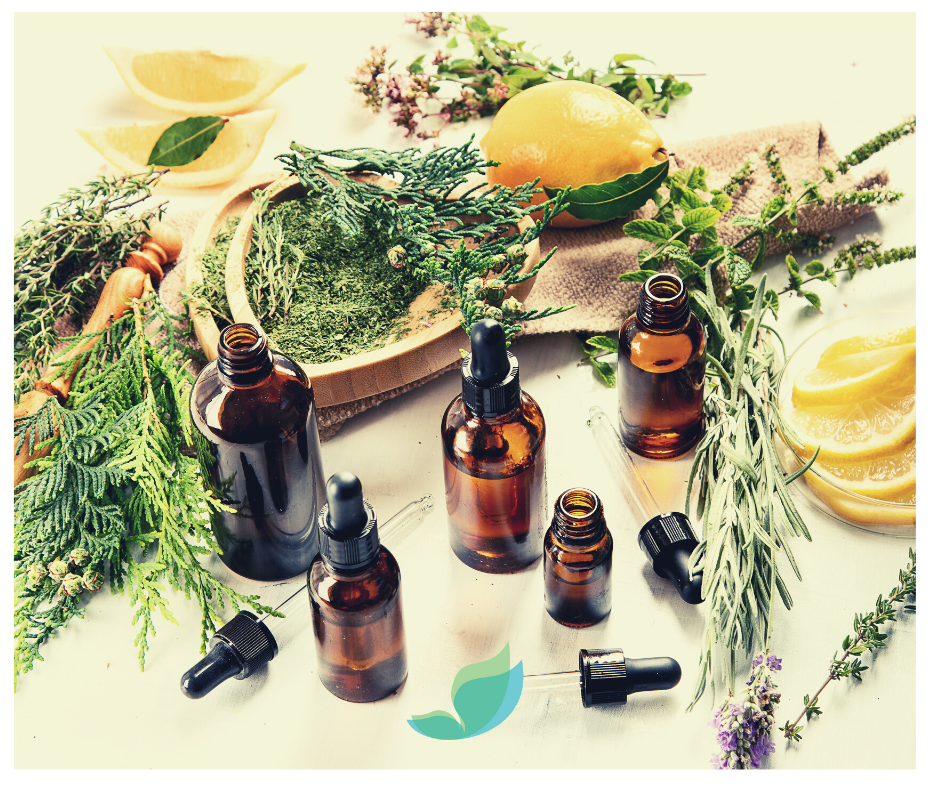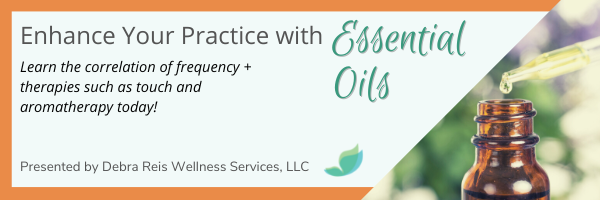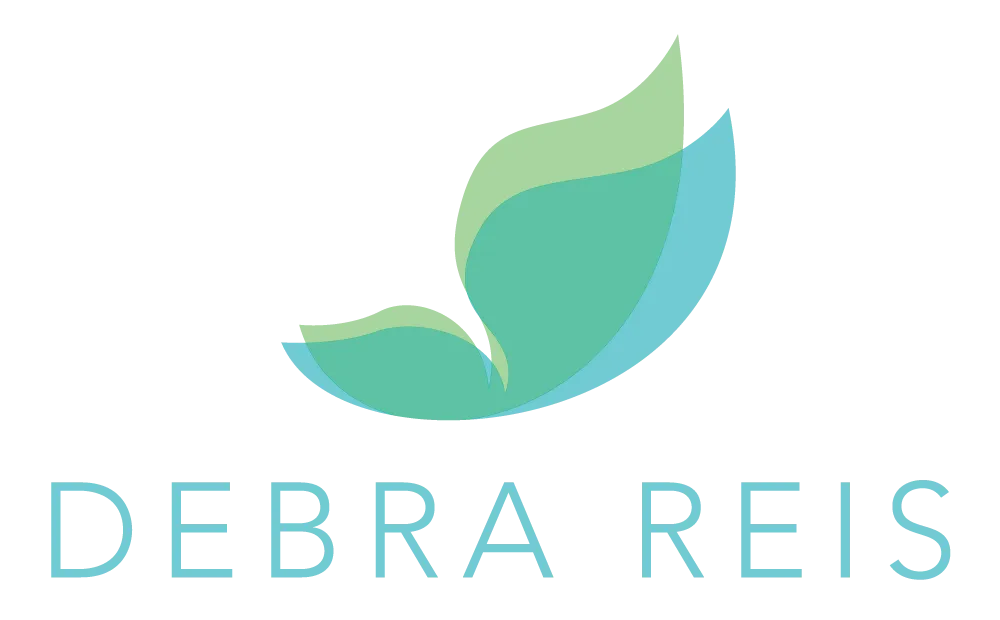BLOG
Supportive Therapies For Better Outcomes — Enrich Your Life Through Relaxation Techniques, Aromatherapy, and Gentle Movement.

Enhance Your Practice with Aromatherapy, Part 1
To enhance your healing practice with aromatherapy, first, we must define what aromatherapy actually is - and then we can discover how it can be used to complement the practice that you already have.
Aromatherapy can be loosely defined as using essential oils to support health and wellness. Therefore, we must understand the nature of essential oils to apply aromatherapy properly.
Essential oils are aromatic, volatile liquids containing the chemical constituents that are the essence of the plant. They can come from bushes, trees, leaves, roots, flowers, and even the rind of fruits!
It’s important to understand that essential oils are NOT the same as fatty oils as you would think of cooking with, although essential oils and fatty oils (carrier oils) can work together to improve the experience of use.

If you intend to use essential oils in your healing practice, it’s also important to understand quality and labeling standards. Any oil can be labeled as “therapeutic grade” because there is no standard for labeling. Purity is also an issue because if 5-10% of essential oil is in the bottle, then it can be labeled as “pure” in the U.S. Quality and purity can significantly impact the results that you see in your practice, so before use, follow these guidelines:
Know your source
Know your company
Know the plant and environment
Know extraction process
Know botanical precision
The third important aspect to consider before beginning use is the safety of using aromatherapy in your practice. Essential oils contain chemical constituents of plants, they do have a direct effect on the body, as well as the possibility of drug interactions.
There are 3 ways to use essential oils, each with special considerations.
Topically - there are several important things to remember with this method. The first is that essential oils should always be diluted in a carrier oil to avoid skin sensitivities or over-exposing the patient to the oils’ constituents. Conduct a skin test before use to ensure there are no sensitivities - this can be done on the feet soles or the elbow crook. If you’re considering using essential oils in a bath, you must use an emulsifier such as salt or milk, as essential oils will not mix with water.

Inhalation - this can be achieved through a personal inhaler (inhaler stick, tissue with an essential oil or blend) or diffusion. A deep inhalation is not recommended if breathing difficulties occur, although diffusion is generally ok. This is the fastest way to introduce the aromatherapy benefits into the system.
Ingestion - can have detrimental effects, is considered medication, and is not recommended without detailed consultation with a qualified specialist.
When considering aromatherapy to enhance your healing practice, understanding what it is, how to use it, and the potential safety issues is vital. Our next blog will review the more profound impact of energy-based healing practice and how aromatherapy can improve your client outcomes.

This blog is provided for educational and informational purposes only and is not medical, mental health, or healthcare advice. Although Debra Reis is a Clinical Nurse Specialist licensed in the state of Michigan, she is not acting in that capacity here. Debra Reis is acting as a holistic educator and consultant, not as a licensed medical health professional or in her professional capacity as a Clinical Nurse Specialist. The information presented here is not intended to diagnose, treat, heal, cure or prevent any illness, medical condition, or mental or emotional condition. Working with us is not a guarantee of any results. Debra Reis, Wellness Services, LLC owns all copyrights to the materials presented here unless otherwise noted.

Enhance Your Practice with Aromatherapy, Part 1
To enhance your healing practice with aromatherapy, first, we must define what aromatherapy actually is - and then we can discover how it can be used to complement the practice that you already have.
Aromatherapy can be loosely defined as using essential oils to support health and wellness. Therefore, we must understand the nature of essential oils to apply aromatherapy properly.
Essential oils are aromatic, volatile liquids containing the chemical constituents that are the essence of the plant. They can come from bushes, trees, leaves, roots, flowers, and even the rind of fruits!
It’s important to understand that essential oils are NOT the same as fatty oils as you would think of cooking with, although essential oils and fatty oils (carrier oils) can work together to improve the experience of use.

If you intend to use essential oils in your healing practice, it’s also important to understand quality and labeling standards. Any oil can be labeled as “therapeutic grade” because there is no standard for labeling. Purity is also an issue because if 5-10% of essential oil is in the bottle, then it can be labeled as “pure” in the U.S. Quality and purity can significantly impact the results that you see in your practice, so before use, follow these guidelines:
Know your source
Know your company
Know the plant and environment
Know extraction process
Know botanical precision
The third important aspect to consider before beginning use is the safety of using aromatherapy in your practice. Essential oils contain chemical constituents of plants, they do have a direct effect on the body, as well as the possibility of drug interactions.
There are 3 ways to use essential oils, each with special considerations.
Topically - there are several important things to remember with this method. The first is that essential oils should always be diluted in a carrier oil to avoid skin sensitivities or over-exposing the patient to the oils’ constituents. Conduct a skin test before use to ensure there are no sensitivities - this can be done on the feet soles or the elbow crook. If you’re considering using essential oils in a bath, you must use an emulsifier such as salt or milk, as essential oils will not mix with water.

Inhalation - this can be achieved through a personal inhaler (inhaler stick, tissue with an essential oil or blend) or diffusion. A deep inhalation is not recommended if breathing difficulties occur, although diffusion is generally ok. This is the fastest way to introduce the aromatherapy benefits into the system.
Ingestion - can have detrimental effects, is considered medication, and is not recommended without detailed consultation with a qualified specialist.
When considering aromatherapy to enhance your healing practice, understanding what it is, how to use it, and the potential safety issues is vital. Our next blog will review the more profound impact of energy-based healing practice and how aromatherapy can improve your client outcomes.

This blog is provided for educational and informational purposes only and is not medical, mental health, or healthcare advice. Although Debra Reis is a Clinical Nurse Specialist licensed in the state of Michigan, she is not acting in that capacity here. Debra Reis is acting as a holistic educator and consultant, not as a licensed medical health professional or in her professional capacity as a Clinical Nurse Specialist. The information presented here is not intended to diagnose, treat, heal, cure or prevent any illness, medical condition, or mental or emotional condition. Working with us is not a guarantee of any results. Debra Reis, Wellness Services, LLC owns all copyrights to the materials presented here unless otherwise noted.


